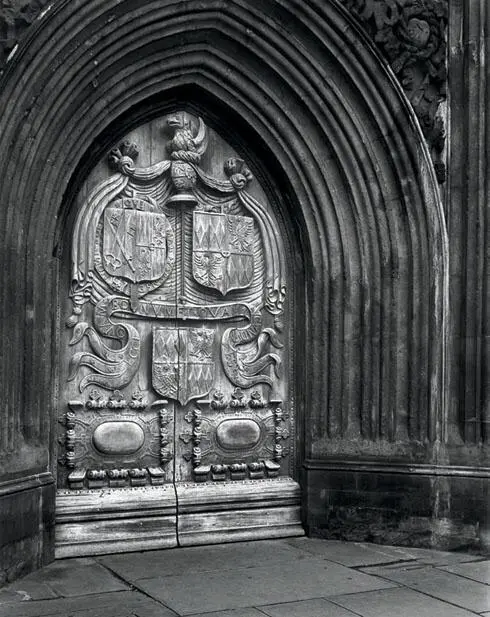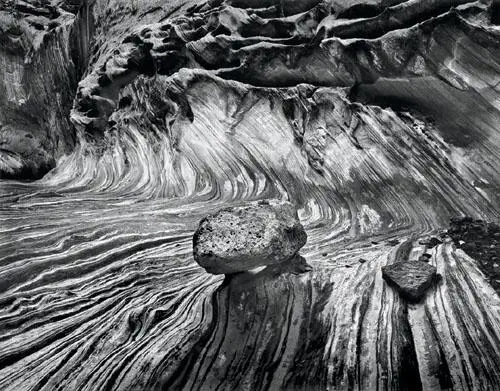Bruce Barnbaum - The Art of Photography - An Approach to Personal Expression
Здесь есть возможность читать онлайн «Bruce Barnbaum - The Art of Photography - An Approach to Personal Expression» весь текст электронной книги совершенно бесплатно (целиком полную версию без сокращений). В некоторых случаях можно слушать аудио, скачать через торрент в формате fb2 и присутствует краткое содержание. Жанр: Старинная литература, на английском языке. Описание произведения, (предисловие) а так же отзывы посетителей доступны на портале библиотеки ЛибКат.
- Название:The Art of Photography: An Approach to Personal Expression
- Автор:
- Жанр:
- Год:неизвестен
- ISBN:нет данных
- Рейтинг книги:5 / 5. Голосов: 1
-
Избранное:Добавить в избранное
- Отзывы:
-
Ваша оценка:
- 100
- 1
- 2
- 3
- 4
- 5
The Art of Photography: An Approach to Personal Expression: краткое содержание, описание и аннотация
Предлагаем к чтению аннотацию, описание, краткое содержание или предисловие (зависит от того, что написал сам автор книги «The Art of Photography: An Approach to Personal Expression»). Если вы не нашли необходимую информацию о книге — напишите в комментариях, мы постараемся отыскать её.
The Art of Photography: An Approach to Personal Expression — читать онлайн бесплатно полную книгу (весь текст) целиком
Ниже представлен текст книги, разбитый по страницам. Система сохранения места последней прочитанной страницы, позволяет с удобством читать онлайн бесплатно книгу «The Art of Photography: An Approach to Personal Expression», без необходимости каждый раз заново искать на чём Вы остановились. Поставьте закладку, и сможете в любой момент перейти на страницу, на которой закончили чтение.
Интервал:
Закладка:

The intricately carved wooden doors attracted my attention, and to my eye they appeared lighter than the surrounding stonework. Instead, they were darker. I was fooled by the attractive door carvings (Figure 10-14). To direct the viewer to the doors, I printed for the stonework while dodging the doors throughout the exposure, then burned the sidewalk in front of the doors extensively using a concave-shaped card. At this stage, the doors were slightly lighter than the stonework. I then carefully bleached the carved doors, preventing any area from bleaching back to pure white. The bleaching gives the doors a bronzed metallic glow, thus exceeding my goal (Figure 10-14) .
Figure 10-14. West Doors, Bath Abbey
Recently, I found out that if too much bleach is applied, there may be a way to correct the situation. Instead of rinsing the print and placing it back in the fixer, place it back in the developer where some of the reduced density may return to the image. Then move it to the stop bath and fixer. Not all of the density from the bleached image will return, but some of it may—and it may be enough to salvage the print.
I have several examples of extensive use of potassium ferricyanide reducing. One photograph from my English cathedral series is of the west doors at Bath Abbey, two magnificently carved wood doors set in a sandstone wall of nearly the same color. Working hastily at the scene, I metered the doors but not the stonework; it appeared to me that the doors were slightly lighter than the adjacent stone, and I figured I could increase contrast through expanded negative development, thereby lightening them even more in relation to the stonework. But my seeing was wrong: the stone was actually slightly lighter than the wood doors, and the extended development pushed them further apart tonally, in the wrong direction! I wanted the viewer’s eye to gravitate toward the doors, not the stonework. Frantic dodging of the doors did little more than make them slightly lighter than the masonry. So I turned to reducing.

This photograph was made under leaden skies in the late afternoon, revealing everything in the scene, including the deep rock hollows at the top. The upper portion has good contrast, but the lower portion is quite low in contrast (Figure 10-15) .
The straight print fails to move the viewer’s eye toward the rock that looks like a breaking wave behind the central boulder. To achieve that, I initially exposed only the top third of the negative through 30 units of magenta filtration, with no exposure on the lower two thirds. Then I dialed 170 units of magenta into the enlarger and exposed the lower two thirds of the image, with additional burning on the lower half, further burning in the lower third, and still more in the lower left quarter (Figure 10-15). At that point, the print was too dark and lacked overall contrast .
Figure 10-15. Boulder and Metamorphosis Wave
I started by printing the entire image intentionally dark, dodging the doors throughout the exposure. Then by bleaching the doors, area-by-area (slowly, over a long period of time), I gradually brightened them and simultaneously increased their contrast.
The final print transforms the intricately carved (but tonally dull) doors into an apparent masterpiece of metallic craftsmanship. I never would have envisioned the final result prior to making the print, for I was merely seeking to make the doors the center of attention through the use of light (Figure 10-14 and Figure 10-14).
Figure 10-14 and Figure 10-14 are a prime example of using darkroom techniques for personal interpretation. In this case, the personal interpretation went beyond my initial goal, but I never would have started down the path to the final print if I did not have the desire to make the doors the center of attention.
The same rule that applies to burning or dodging applies to reducing a print: no matter how extensive the procedure is, it must not be apparent. Even in the example of the abbey doors, they appear to be shiny metallic doors, not the result of a contrived photographic technique.
A second extreme example—a true tour de force of bleaching—is shown in Figure 10-15, Figure 10-15, and Figure 10-15. This photograph pushes all printing methods to the limit. I printed the upper quarter of the image at 35 units of magenta filtration (just a bit above average contrast) while fully blocking out any exposure on the bottom three quarters. I dialed magenta filtration to the maximum of 170 units on my LPL dichroic enlarger and exposed only the bottom three quarters of the image. Then I progressively burned further down toward the bottom of the print, all the while dodging the rock in the center, particularly its darker underside. I intentionally made the lower three quarters too dark at this stage, with the knowledge that I would later bleach large portions of that area.

The final step was to bleach the wave, the striped canyon floor, and the central boulder. This increased contrast throughout the bleached areas, drawing the viewer’s attention to the “wave”. However, there is no bleaching on the striped floor directly below the central boulder, thus creating an apparent shadow that was not part of the scene. The boulder appears to teeter at the edge of a precipice, adding a further level of dynamism to an already dramatic scene .
Figure 10-16. Boulder and Metamorphosis Wave
It turns out that the negative has two separate areas of contrast: the upper quarter, which has fairly good contrast, and the lower three quarters, which has very low contrast. So I had to deal with those two parts separately, almost as if they were two distinct images. Of course, I had to mesh the two parts smoothly and seamlessly. With great care I bleached the wave form, the central rock, and the striped rock that forms the floor, dramatically increasing contrast of those areas.
But notice that when bleaching the striped floor, I didn’t bleach the portion below the central rock (Figure 10-15). Because I did not use any bleach in that area, there appears to be a shadow below the rock, making it look like the rock is teetering at the edge of a precipice. The straight print (Figure 10-15) and the fully burned and dodged print (Figure 10-15) show no such precipice. The bleaching adds another dynamic to an image that is already filled with dynamism.
Usually, potassium ferricyanide reducing is far less extensive and far subtler. Many of my prints have no bleaching whatsoever. Some have small touches here and there for tonal adjustments. Only a few have the extensive bleaching of these examples. Furthermore, I try to do as much as possible with appropriate contrast filtration, burning, and dodging before I turn to bleaching. But as these examples show, it’s an extraordinarily powerful tool.
The bleaching procedure has no harmful effect on the permanence of the print. When you use potassium ferricyanide, always fix the print fully after reducing is completed, just as if the print had first been transferred from the stop bath to the fix. If this step is not completed, the bleached areas will not be fully fixed. For proper fixing of the image, I use two trays of fix. Both are Kodak standard fixer with hardener, packaged as a powder to be dissolved. I mix the second fix before each darkroom session and pour it into the first fix bottle at the close of each darkroom session (after dumping out the first fix). Thus, the first fix is always previously used as a second fix, and the second fix is new. The reason for two fixes is that the first actually does all the fixing (i.e., removing undeveloped silver from the emulsion) and the second removes harmful silver salts that build up in the fix and cannot be washed out later.
Читать дальшеИнтервал:
Закладка:
Похожие книги на «The Art of Photography: An Approach to Personal Expression»
Представляем Вашему вниманию похожие книги на «The Art of Photography: An Approach to Personal Expression» списком для выбора. Мы отобрали схожую по названию и смыслу литературу в надежде предоставить читателям больше вариантов отыскать новые, интересные, ещё непрочитанные произведения.
Обсуждение, отзывы о книге «The Art of Photography: An Approach to Personal Expression» и просто собственные мнения читателей. Оставьте ваши комментарии, напишите, что Вы думаете о произведении, его смысле или главных героях. Укажите что конкретно понравилось, а что нет, и почему Вы так считаете.












